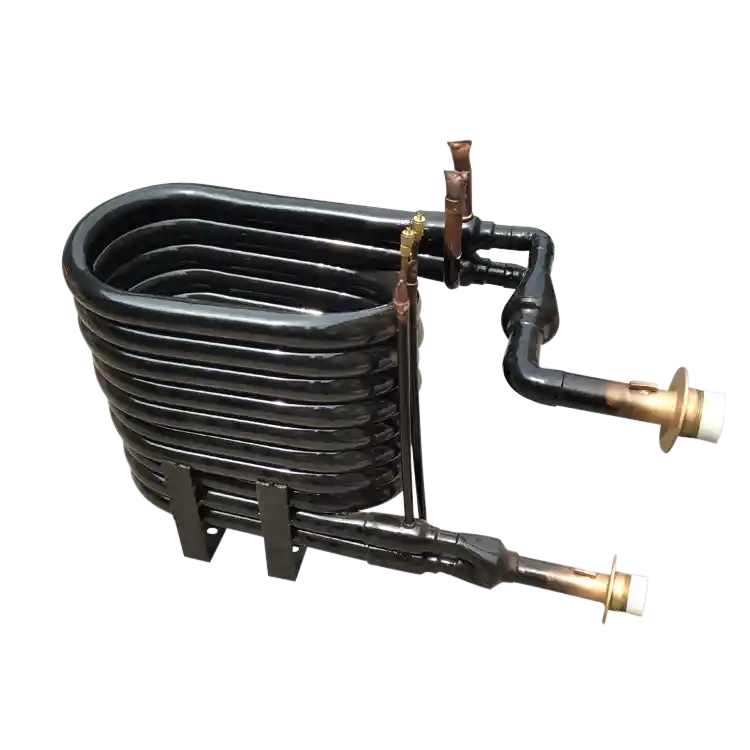1. Introduction
O-rings play a crucial role in the assembly and connection process of coaxial heat exchangers. These small, circular sealing elements ensure a reliable and leak-free seal between components, such as flanges and fittings. This article focuses on the importance of O-rings in coaxial heat exchangers, their selection criteria, placement techniques, and considerations for optimal performance.
2. Understanding O-Rings
O-rings are simple, yet highly effective, sealing devices commonly used in various industries, including heat exchanger manufacturing. They are typically made of elastomeric materials, such as nitrile rubber, EPDM, or silicone, chosen for their excellent sealing properties and compatibility with different fluids and temperatures.
3. Importance of O-Rings in Coaxial Heat Exchangers
O-rings serve several critical functions in coaxial heat exchangers:
3.1 Sealing Fluid Pathways
O-rings are placed in sealing grooves or recesses to create a barrier between fluid pathways, preventing leakage and ensuring proper flow within the heat exchanger.
3.2 Compensation for Thermal Expansion
Coaxial heat exchangers experience temperature variations during operation. O-rings help compensate for thermal expansion and contraction, maintaining a tight seal even under changing conditions.
3.3 Vibration and Shock Absorption
Heat exchangers may encounter vibrations and mechanical shocks. O-rings act as shock absorbers, reducing the risk of loosening connections and maintaining seal integrity.
4. O-Ring Selection Criteria
Choosing the right O-ring for a coaxial heat exchanger involves considering several factors:
4.1 Material Compatibility
Select an O-ring material that is compatible with the fluids, temperatures, and environmental conditions encountered in the heat exchanger. Common materials include nitrile rubber, EPDM, silicone, and fluorocarbon elastomers (e.g., Viton®).
4.2 Temperature Resistance
Ensure the O-ring material can withstand the temperature range of the heat exchanger without losing its sealing properties or degrading.
4.3 Fluid Compatibility
Consider the chemical compatibility of the O-ring material with the fluids being processed to prevent degradation, swelling, or loss of sealing effectiveness.
4.4 Pressure Rating
Choose O-rings with appropriate pressure ratings to withstand the internal pressure of the heat exchanger without extrusion or failure.
4.5 Size and Dimensions
Select O-rings with the correct size and dimensions to fit snugly within the designated sealing groove or recess.
4.6 Durometer
Durometer refers to the hardness of the O-ring material. Choose the appropriate durometer to ensure proper compression and sealing without excessive deformation or inadequate contact.
5. O-Ring Placement Techniques
Proper placement of O-rings is crucial to achieving a reliable seal in coaxial heat exchangers. The following steps outline the general process:
5.1 Pre-Installation Inspection
Inspect the O-rings for any signs of damage, wear, or contamination. Ensure they are clean, free from debris, and properly lubricated if required.
5.2 Groove Preparation
Clean the groove or recess where the O-ring will be placed, removing any residue, old O-rings, or debris that may interfere with the sealing performance.
5.3 O-Ring Installation
Place the O-ring carefully into the groove, ensuring it sits uniformly and does not twist or kink.
5.4 Compression and Seating
Assemble the components of the heat exchanger, applying even pressure to compress the O-ring uniformly. Follow the manufacturer’s specifications for torque values and tightening procedures.
5.5 Inspection and Testing
After assembly, visually inspect the O-ring and surrounding area for any signs of misalignment, damage, or improper seating. Conduct a pressure or leak test to verify the effectiveness of the seal.
6. Considerations for O-Ring Performance
To maximize the performance and longevity of O-rings in coaxial heat exchangers, keep the following considerations in mind:
6.1 Proper Lubrication
Apply a compatible lubricant to the O-ring during installation to reduce friction, aid in proper seating, and improve sealing effectiveness.
6.2 Regular Inspection and Maintenance
Periodically inspect the O-rings for signs of wear, degradation, or loss of elasticity. Replace O-rings as needed to ensure continued seal integrity.
6.3 Avoid Overcompression
Do not excessively tighten or compress the O-ring, as it can lead to deformation, loss of elasticity, and potential leakage.
6.4 Environmental Factors
Consider the impact of environmental factors such as UV exposure, chemicals, and extreme temperatures on the O-ring material. Take appropriate measures, such as using protective coatings or selecting specialized materials, to mitigate potential risks.
7. Conclusion
Proper placement of O-rings is essential for achieving reliable sealing in coaxial heat exchangers. By selecting the appropriate O-ring material, following correct installation techniques, and considering performance factors, manufacturers can ensure leak-free operation and optimal heat transfer efficiency. Regular inspection and maintenance will help identify and address any issues promptly, prolonging the lifespan of the O-rings and the overall performance of the heat exchanger system.
Property Rubber O-Rings PTFE O-Rings Metal O-Rings
Material Nitrile rubber, PTFE Stainless steel,
EPDM, silicone Inconel
Temperature Range -40°C to +120°C -200°C to +260°C -200°C to +700°C
Chemical Good resistance Excellent Excellent
Compatibility to various chemical chemical
fluids compatibility compatibility
Pressure Rating Medium to high Medium to high High
Cost Low High Moderate


